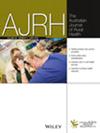The Causes, Characteristics and Outcomes of Paediatric Farm Burns in Australia and New Zealand
Abstract
Objective
Burn injuries on farms are under-recognised in Australia and New Zealand. Previous studies suggested children are at risk of burn injury, focusing on risk factors including unmodified farm work, risk-taking behaviours, lack of supervision, and limited safety regulations. This study investigated the causes, characteristics, and outcomes of paediatric farm burns.
Methods
Registry-based retrospective cohort study.
Design
Observational.
Setting
Burns Registry of Australia and New Zealand (BRANZ).
Participants
Paediatrics aged < 16 years and registered to the BRANZ between 2009 and 2021.
Main Outcome Measures
The demographics, causes of burn injuries, pre- and in-hospital management, severity, and outcomes.
Results
Out of 10 936 paediatric burns, 186 were farm-related (1.7%). Children sustaining farm-related burns were older than those in non-farm environments, with 78.8% aged ≥ 5 years. Most farm burns occurred during leisure (72.5%). Predominant causes were found to be contact (62.4%), followed by flame (19.9%) and friction (10.8%). Only 56.9% received gold-standard first aid compared to 74.0% in non-farm environments. Farm-related burns were smaller but a greater proportion were full-thickness injuries, requiring surgical management with skin grafts. The majority of farm-related burns were discharged home (97.3%) with zero deaths.
Conclusion
Farm-related burns in children are distinct from burns in non-farm environments. Despite children being well-recognised participants in farm work, work-related burns were relatively uncommon, and the occurrence of burns during leisure may explain low rates of recommended first aid. These insights can inform burn prevention and first aid strategies targeted at farm communities.


 求助内容:
求助内容: 应助结果提醒方式:
应助结果提醒方式:


